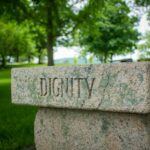
Why focus on multiracial democracy at a time marked by rising corruption and authoritarianism? The answer is simple: if you don’t have a positive destination in mind, you’ll never get there.
And, if we are honest, US democratic progress, as fitful and halting as it has been, has always relied on Black institutions that have engaged in the work of democracy building. For centuries, Black people have been foundational to holding the United States accountable to its stated ideals of freedom, justice, and the pursuit of happiness for all.
For just as long, we have created networks and organizations to advance rebellion, resistance, community, joy, and care. Even when it was illegal for enslaved Black folks to gather, they organized underground dances where they invented new art forms and practiced liberation. Churches fundraised for secret schools where children learned to read and write, and adults nurtured a shared political consciousness.
US democratic progress, as fitful and halting as it has been, has always relied on Black institutions that have engaged in the work of democracy building.
From these seeds grew movements and institutions—from abolitionism to civil rights to Black Lives Matter. From freedom schools to historically Black colleges and universities. From the Student Nonviolent Coordinating Committee to today’s vibrant, Black-led philanthropic, nonprofit, and social-impact research ecosystem. From the nightclubs of the Harlem Renaissance to Motown and Roc Nation. From the National Domestic Workers Union to the National Black Farmers Association. From Black Wall Street to the growing number of Black-owned asset management and investment firms.
Many of these Black-led institutions, movements, and ecosystems have historically prioritized empowering Black communities, provided essential services, and amplified Black voices and culture.
Yet their advocacy, support, and artistic contributions have always extended beyond Black beneficiaries. The foundation of our evolving multiracial democracy is deeply rooted in the organizing, direct services, and storytelling championed by Black institutions and movements.
Whether fighting for voting rights, establishing local job training programs, fostering Black homeownership, or spearheading criminal legal reform, the interventions and support initiated by Black institutions, though targeting Black communities, have consistently yielded benefits for society as a whole. Out of necessity, these institutions have consistently worked toward a multiracial democracy where “everyone wins.” Pro-Black, noted NPQ a few years ago, is “pro-everybody.”
Multiracial Democracy and the Strain on Black Institutions
“Multiracial democracy” has recently become a central concept and driving ambition for many progressive figures and organizations. At the same time, the current political, economic, and cultural climate is rapidly reshaping the nonprofit and philanthropic sectors, straining justice-focused groups, especially Black institutions.
Throughout the United States, initiatives promoting equity and justice are encountering substantial resistance. We are witnessing a deliberate and growing opposition to advancements in racial, gender, economic, and climate justice, from legislative reversals of diversity, equity, and inclusion programs to coordinated campaigns targeting nonprofit and philanthropic leaders.
As various philanthropic, political, and social sector leaders introduce their updated strategies and investments aimed at fostering a multiracial democracy, there’s a concerning tendency to overlook the significant and long-standing contributions of Black institutions. These institutions have historically been pivotal in building and advocating for a multiracial democracy, a reality that is now being subtly downplayed.
For two decades, I’ve had the privilege of contributing to and leading Frontline Solutions, which was founded to foster an equitable disaster recovery in the Gulf Coast after Hurricane Katrina. We operate as an intermediary, a funder, a consultant, and an infrastructure-building organization.
Since our inception, we have supported and championed a diverse network of partners, grantees, clients, and collaborators, including numerous other Black-led and Black-centered institutions.
Over the past year, many of these organizations are being asked by funders and partners to justify how they will contribute to building a multiracial democracy “in this moment.” This line of questioning, regarding the role of Black institutions in fostering a multiracial democracy, has gained popularity and is often considered a thoughtful or even insightful inquiry.
Yet this framing suggests that there is something inherently oppositional between multiracial democracy and fighting for Black people specifically. I reject that premise.
Instead, I propose a different question: In pursuit of a multiracial democracy, what is the role of Black institutions?
Creating a multiracial democracy should not mean ignoring the issue of race.
Historical Considerations
In “What Does it Mean to Have a Strong Multiracial Democracy?,” a discussion between Khalil Gibran Muhammad and Archon Fung of The Ash Center at Harvard, Muhammad highlights that advancements in racial equality in the United States have largely been driven by Black people striving to broaden the scope of democracy.
Muhammad observes that periods of progress have consistently been met with resistance. Examples range from “silent majority” backlash during Richard Nixon’s presidency following the civil rights movement, to current opposition against systemic reforms prompted by George Floyd’s murder.
Muhammad’s insights underscore the historical commitment of Black institutions and movements to the arduous task of democracy building. He also draws attention to recurring patterns of societal withdrawal in the face of backlash, which emerge whenever efforts are made to advance a more inclusive vision of US democracy.
In her Spring 2023 article, “How We Achieve a Multiracial Democracy,” Angela Glover Blackwell, founder of PolicyLink, responds to this pattern, asserting that “America needs a new story to energize the movement to build a sustainable, thriving multiracial democracy.” She contends that “right-wing politicians and media have thoroughly demonized discussions of race to prevent repair work and social change.”
To truly achieve the promise of a multiracial democracy, we must acknowledge and actively fortify the very institutions that have tirelessly worked to build it.
Additionally, many White folks who consider themselves allies fear that an emphasis on race jeopardizes their big-tent approach. However, Blackwell argues that “this silencing tactic can no longer hide the fact that the systems and institutions designed to oppress Black people…are now hurting all but the most affluent of Americans.”
She warns that creating a multiracial democracy should not mean ignoring the issue of race; a “new story” must not fall into that trap. Rather, “Talking about race is in fact the only way democracy can succeed in a multiracial society. And if activists and organizations are successful, building and sustaining a vibrant multiracial democracy will be the next great US innovation.”
Future Questions
I cannot offer definitive answers for the future ahead. Instead, I respectfully pose questions for our collective reflection, which acknowledge the profound and ongoing contributions of Black institutions to the development of a multiracial democracy. If “We the People” truly aspire to be “a more perfect Union,” let us consider:
- What if Black leaders, organizations, and movements were resourced in proportion to their invaluable contributions and significance to democracy building?
- If authoritarianism is successfully resisted and multiracial democracy is to be the nation’s new story, how important is it to reimagine the role of Black people within this story?
- Can a flourishing and enduring multiracial democracy truly exist without robust and sustainable Black movements and institutions?
To truly achieve the promise of a multiracial democracy, we must acknowledge and actively fortify the very institutions that have tirelessly worked to build it. It is time to shift the conversation from questioning the relevance of Black institutions to recognizing their indispensable role and investing in their sustainability. By doing so, we not only honor a profound legacy but also lay a more robust and equitable foundation for the future of US democracy, one in which all people can truly thrive.














